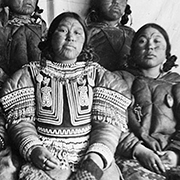CANADA HISTORY
A New Leader

The end of the First World War marked a period of profound transformation for Canada, both socially and politically. As the country grappled with the aftermath of the war and the changes brought on by the Russian Revolution, there was also a significant shift in the leadership of Canada's two dominant political parties: the Liberals and the Conservatives. The changing of the guard between veteran political figures like Wilfrid Laurier and Robert Borden and their successors, William Lyon Mackenzie King and Arthur Meighen, respectively, would set the stage for a new political era in Canada. This transition was not just a shift in personalities but also a reflection of deeper societal and political changes that would define the interwar period.
The Changing Landscape of Canadian Politics
The end of World War I left Canada with a new sense of national identity, shaped by its contributions to the war effort and the sacrifices made by its soldiers. However, this period also brought challenges, including the conscription crisis, growing tensions between labor and capital, and a realignment of political forces. These issues deeply affected the political landscape, influencing voter sentiment and party strategies.
The 1917 conscription crisis, in particular, had created deep divisions within Canada, especially between French and English Canadians. Prime Minister Robert Borden’s decision to introduce conscription led to the formation of the Unionist government, a coalition of pro-conscription Conservatives and Liberals. This move alienated many French Canadians, who felt betrayed by the federal government. The Liberal Party, under the leadership of Wilfrid Laurier, chose not to support the Unionist government, leading to a temporary weakening of the party's position in English Canada but allowing it to maintain its stronghold in Quebec.
In this turbulent post-war environment, William Lyon Mackenzie King emerged as the new leader of the Liberal Party. A skilled mediator and political tactician, King represented a new generation of leadership that was more in tune with the changing political and social dynamics of the country. His rise to prominence and eventual leadership of the party would reshape Canadian politics in significant ways.
Mackenzie King's Path to Leadership
Mackenzie King’s path to leadership was not without obstacles. In the 1917 federal election, he initially chose not to run, aware that the political climate, particularly in pro-conscription Ontario, was not in his favor. The wartime electoral landscape had changed significantly, with women gaining the right to vote and many conscription supporters aligning with the Conservatives. Despite his reluctance, King was persuaded by Wilfrid Laurier to contest the election, though he ultimately lost his seat in York North by a narrow margin.
After his defeat, King turned his attention to his academic and professional interests, developing his expertise in labor relations and writing a book on labor economics. His work with influential industrialists like John D. Rockefeller and Andrew Carnegie in the United States further honed his skills as a mediator and negotiator, qualities that would serve him well in the rough-and-tumble world of Canadian politics.
When Laurier passed away in 1919, King seized the opportunity to position himself as the natural successor. His decision to stick with the Liberals during the difficult years of the war, his relatively young age (compared to his main rival W.S. Fielding), and his stance against conscription made him an appealing candidate for party leadership. At the Liberal leadership convention in August 1919, King’s skillful speech—praising Laurier and positioning himself as the heir to the Liberal tradition—won over the delegates, securing him the leadership on the fourth ballot.
King’s ascent was a testament to his political shrewdness and his ability to navigate the complicated internal dynamics of the Liberal Party. His focus on social policies, such as old age pensions, unemployment insurance, and labor rights, reflected the growing concerns of the post-war era and positioned the Liberals as the party of social progress.
Arthur Meighen and the Conservative Challenge
While Mackenzie King was consolidating his position within the Liberal Party, the Conservative Party was undergoing its own leadership transition. Arthur Meighen, a brilliant orator and fierce debater, emerged as the successor to Sir Robert Borden. Meighen’s rise within the Conservative ranks had been rapid. First elected to Parliament in 1908, Meighen had quickly gained Borden’s favor and by 1913 was appointed Solicitor General. His reputation as a tough enforcer of government policy grew during World War I, particularly through his handling of two critical pieces of legislation: the Wartime Elections Act and the Military Service Act, both of which were instrumental in introducing conscription.
Meighen’s firm stance during the Winnipeg General Strike of 1919 further cemented his reputation as a hardline defender of the establishment. His actions during the strike, in which he sided with business interests and strongly opposed labor unions, alienated many in the labor movement and damaged his standing among working-class voters. Despite these challenges, Meighen was seen as Borden’s natural successor, and when Borden retired in 1920, Meighen assumed leadership of the Conservative Party and the position of Prime Minister.
However, Meighen’s tenure as Prime Minister would be brief. His association with conscription and his handling of the Winnipeg General Strike had left him politically vulnerable, particularly in Quebec and among labor groups. In the 1921 federal election, the first held after the war, Meighen faced a resurgent Liberal Party led by Mackenzie King. King, with his focus on social reform and his ability to unify the party, was able to capitalize on the desire for change, particularly among voters tired of the Conservative government's hardline policies. The election saw the Liberals win a majority, and on December 29, 1921, Mackenzie King became Prime Minister.
A New Political Era
The political transitions of the early 1920s marked the beginning of a new era in Canadian politics. Mackenzie King’s leadership ushered in a period of social reform and progressive policies that would define much of the interwar period. His focus on issues like old age pensions, unemployment insurance, and workers' rights resonated with a population eager for stability and security after the upheavals of the war. King’s ability to balance the interests of different regions and social groups made him a master of coalition-building, a skill that would serve him well during his long tenure as Prime Minister.
For the Conservative Party, the transition from Borden to Meighen proved to be more challenging. Meighen’s hardline stance on labor and conscription, coupled with his inability to appeal to a broad coalition of voters, left the party vulnerable to the Liberal resurgence. Although Meighen was a brilliant debater and a formidable politician, his leadership failed to inspire the same level of loyalty and support that Borden had commanded. This would be a recurring theme for the Conservatives in the years to come, as they struggled to find a leader who could unite the party and challenge King’s dominance.
The Long-Term Impact on Canadian Politics
The leadership transitions of the post-war years had a lasting impact on Canadian politics. Mackenzie King’s rise to power marked the beginning of the Liberal Party’s dominance in Canadian federal politics for much of the 20th century. King’s pragmatic approach to governance, his focus on social issues, and his ability to maintain party unity allowed him to remain Prime Minister for most of the period between 1921 and 1948.
For the Conservatives, the challenges of leadership and party unity continued to plague them throughout the 1920s and beyond. Meighen’s brief tenure as Prime Minister was a reflection of the party’s difficulties in appealing to a broad cross-section of the Canadian electorate. The party’s association with conscription and its failure to address the concerns of labor and French Canadians left it struggling to regain the dominance it had enjoyed under Macdonald and Borden.
The end of the First World War marked a turning point in Canadian politics, as both the Liberal and Conservative parties underwent significant leadership changes. The rise of Mackenzie King and Arthur Meighen symbolized the emergence of a new generation of political leaders, each representing different visions for Canada's future. While King’s social reform agenda and ability to unify the Liberals positioned him for long-term success, Meighen’s hardline conservatism and his association with the divisive issues of conscription and labor unrest limited his appeal.
The political realignments of the post-war years would have lasting effects on Canadian history, setting the stage for the Liberal Party’s dominance in the decades to come and highlighting the challenges the Conservative Party would face in maintaining a cohesive and electorally successful platform. The transition from Borden and Laurier to King and Meighen marked not just a change in leadership but a shift in the political and social fabric of Canada.
Cite Article : www.canadahistory.com/sections/documents




